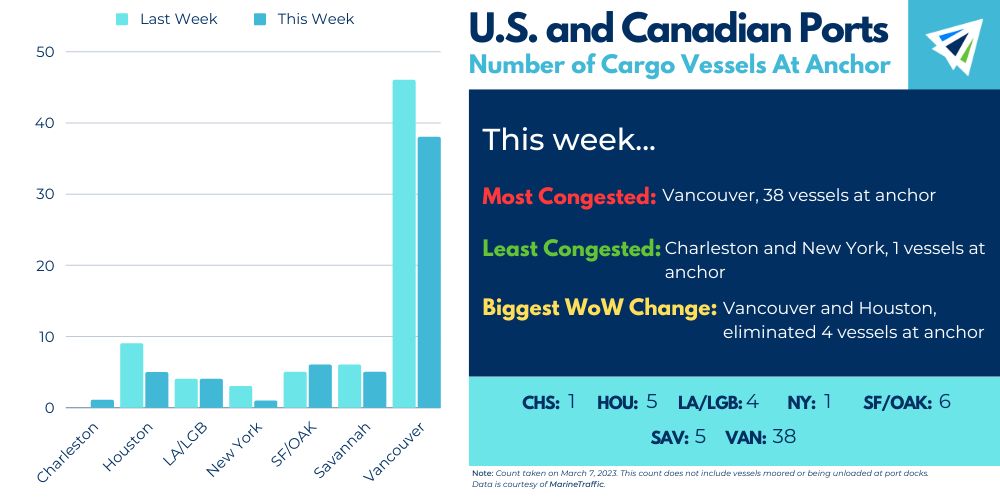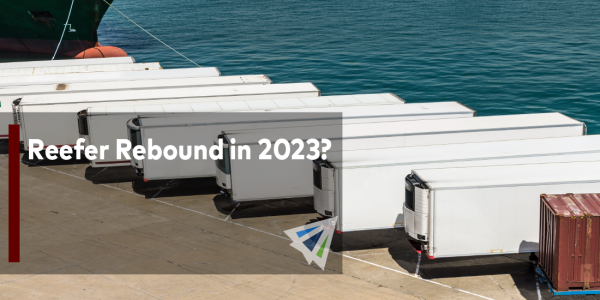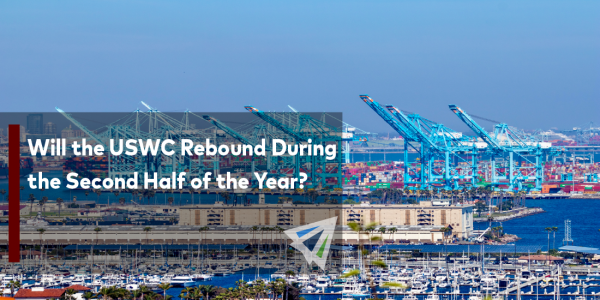Competitive Edge
March 8th, 2023

Have another North American port you would like for us to track weekly? Email us at sales@interlogusa.com
Takeaways
• U.S. West Coast: Everyone’s pressing question, “How soon is soon?” West Coast dockworkers and maritime employers jointly announced the two sides are “hopeful of reaching a deal soon”, however no definitive timeline has been revealed or speculated on. Despite the statement, ten months of stalling negotiations have given way to a lack of confidence in stakeholders. This has been reflected in the WC’s loosening share of the import market.
• U.S. Gulf Coast: The Port of Houston’s dwell fee program remains in effect.
• U.S. East Coast: Due to the volume drag, Savannah will seize its offering of evening truck hours while also discontinuing its use of several inland pop-up storage yards. The single-digit vessel counts indicate the volume dip is apparent at all EC gateways.
IMPORT: Asia to North America (TPEB)
Recent Developments:
• Low import volumes from China have led some carriers to shifting capacities in the transpacific. Zim recently increased capacity on its Southeast Asia to USEC service while winding down its China to USWC service.
• West Coast contract negotiations between the International Longshore and Warehouse Union (ILWU) and Pacific Maritime Association (PMA) remain active. The existing labor contract between the two parties expired on July 1, 2022
Rates: Rates to all US coasts remain low and level.
Space: Space is open.
Capacity: Capacity is open. However, expect a continued presence of blank sailings.
Equipment: Unless advised otherwise, availability is open at inland and coastal ports.
TIPS:
• Book at least two weeks prior to the ready date.
• Expect blank sailings to carry on through Q1 2023.
IMPORT: Europe to North America (TAWB)
Recent Developments:
• Relatively high rates and their profitability continue to attract carriers’ attention to the transatlantic market. However, expect the trade to eventually soften as demand dips below last year standards.
Rates: With capacity increasing and demand dropping, rates remain in a downward descent. However, they are still notably high when compared to pre-pandemic levels.
Space: Space is open to all U.S. coasts as congestion becomes an odd factor.
Capacity: Capacity continues to loosen as the market sees more ships, including larger ones, entering the market. It is set to increase even more with congestion having subsided.
Equipment: Availability has improved on both sides of the trade.
TIPS:
• Book at least three weeks prior to ready date.
• Even as market conditions become more fair, premium services (i.e., no-roll options and improved cargo reliability) should still be considered.
• Blank sailings have not been routine for the market but remain in close contact with providers to be aware of any developments.
EXPORT: North America to Asia
Rates: Rates continue to slip downward at a slight clip.
Space: Space is wide open.
Capacity: Capacity is widely available for all services. No considerable changes to this market’s capacity through Q1 2023.
Equipment: It can be generally said that most inland points and seaports have balanced equipment availability. If any uncertainty exists, it would be chassis availability at select inland hubs.
TIPS:
• Book at least two weeks prior to the time of departure.
• Blank sailings have not been routine for the market but remain in close contact with providers to be aware of any developments.
• Shippers with high volume projects should take advantage of carrier receptiveness to take on these opportunities. Space is wide open with a high acceptance rate.
InterlogUSA Proudly Presents...Freight FM
“FreightFM” features short-form video interviews with InterlogUSA’s industry experts, offering insights into breaking news, market trends, our company’s history, and more.
Be on the lookout for a new episode coming soon! In the meantime, listen now for a glimpse into past episodes.
Did You Know: U.S. DOT Has $12.4 Million in Funding Available for Maritime Projects
The U.S. Department of Transportation will assess any proposed projects based on how effective they will move goods.
Other factors include their level of non-federal funding, geographic diversity, and how the projects address challenges faced by rural areas.
These grants help support marine highways, vessels, and landside ports and infrastructure which are crucial in building supply chain resilience.
Freight News
Port Executives Share Their Thoughts on Detention and Demurrage as OSRA Regulations Approach
Its soon expected that the Federal Maritime Commission will enforce new rulemaking surrounding detention and demurrage costs, as part of the Ocean Shipping Reform Act (OSRA) that was signed into law last year.
Back in October last year, the FMC suggested that carriers issue bills only to parties with which they have contractual relationships.
But some wonder if these new possible rules will impact the flow of goods.
Here are some U.S. port executives’ thoughts on the matter:
Beth Rooney, Port Director at Port Authority of NY/NJ – Rooney’s main concern is that capacity in the port will be constrained, and that there could also be unintended consequences. You can read her full quote here.
Griff Lynch, Executive Director at Georgia Ports Authority – Lynch stated the importance in being careful so we “don’t take a system that worked for many years… and blow it up and start all over again.” His full quote can be found here.
Transloading Growth: Are More Importers Embracing Transloading?
Intermodal providers are hopeful that a surge in transloading this year will occur, as more importers are embracing transloading when moving products via inland ports.
In the last few months, the shift from International Intermodal, otherwise known as IPI, to domestic intermodal has become more noticeable – the JOC reports.
One of the main reasons for the shift has been speed to market. There have been issues with marine chassis shortages and congestion at various inland hubs, which have led some importers to turn to domestic intermodal.
Some are betting on transloading to become even more popular in the near future. For right now, many port cities on the East Coast have seen transloading boom – specifically NY/NJ, and Norfolk, Virginia.
Furthermore, BNSF is spending over a billion dollars to develop acres of land, which will be transformed into a major transload hub – it ideally could be open as early as 2027.
BNSF would rail containers from the ports of LA/LB to Barstow, then transfer loads into 53 foot domestic containers, and then build trains to inland locations, per the JOC.
Watch Our February Webinar!
Topics:
- CNY/Trade Lane Predictions
- Blank Sailings
- Benefits of Outsourcing Your Logistics
Sign Up for This Month's Webinar
Our next webinar will be on Wednesday, March 15th!
Some topics include:
– The importance of a freight forwarder and how to determine which is the best fit
– Upcoming RFQ Season: Evaluating all areas of business
-Strategies for succeeding in today’s freight market
– Current events
Interlog  Insights
Insights
In last week’s newsletter, we introduced a new segment regarding RFQs.
We also discussed the labor talks out on the USWC and touched on how shippers WANT supply chain visibility.
Make sure you sign up so you don’t miss week two of our March Interlog Insights!
Sign up for our
industry answers
Our team works to provide valuable, unique, and relevant content to assist you in finding solutions. Sign up now.

